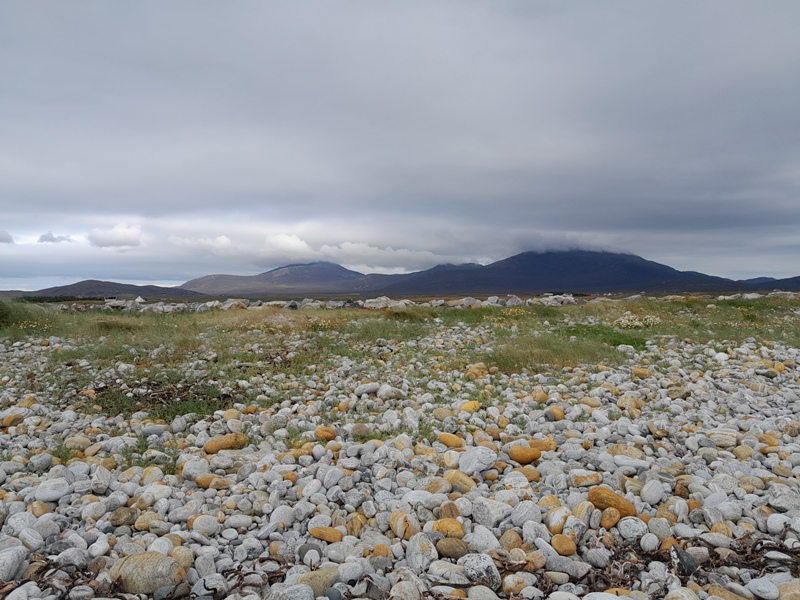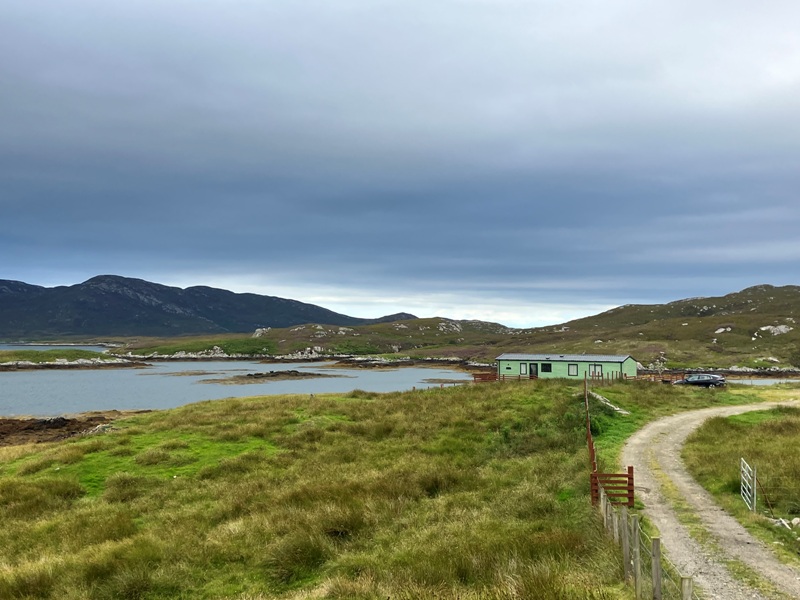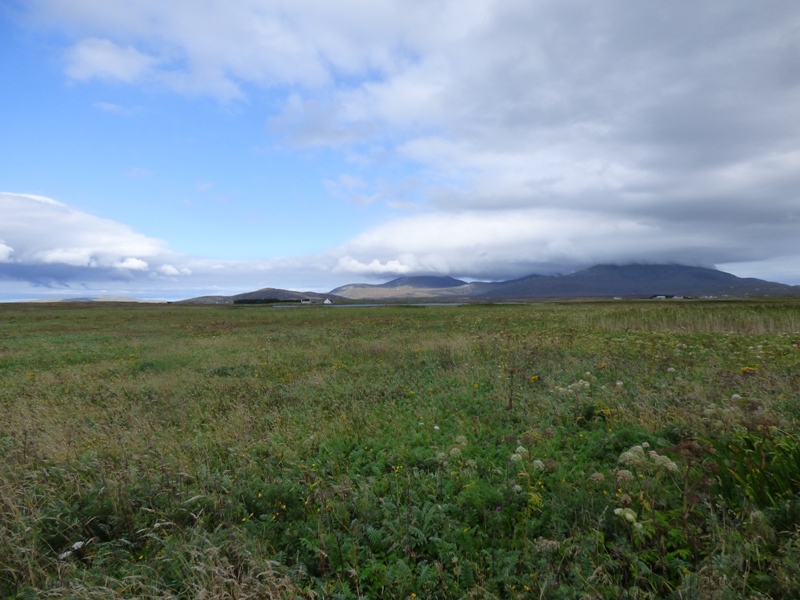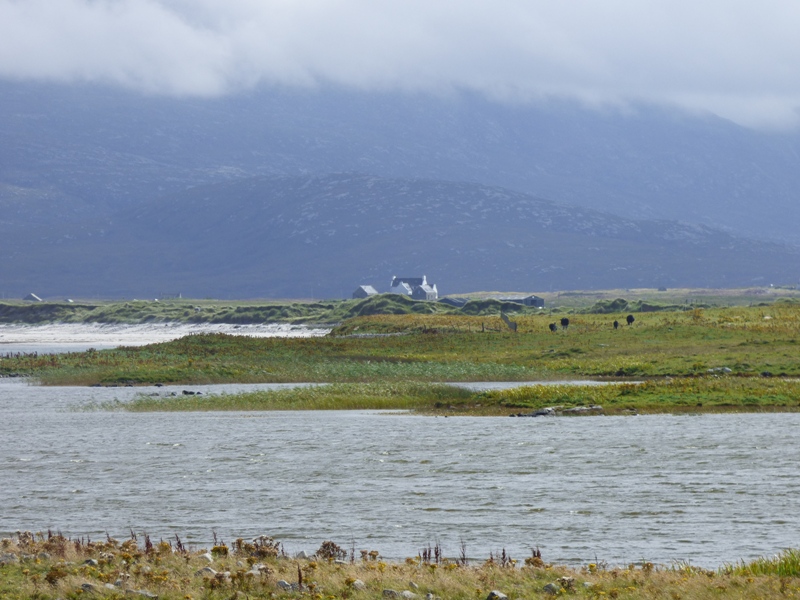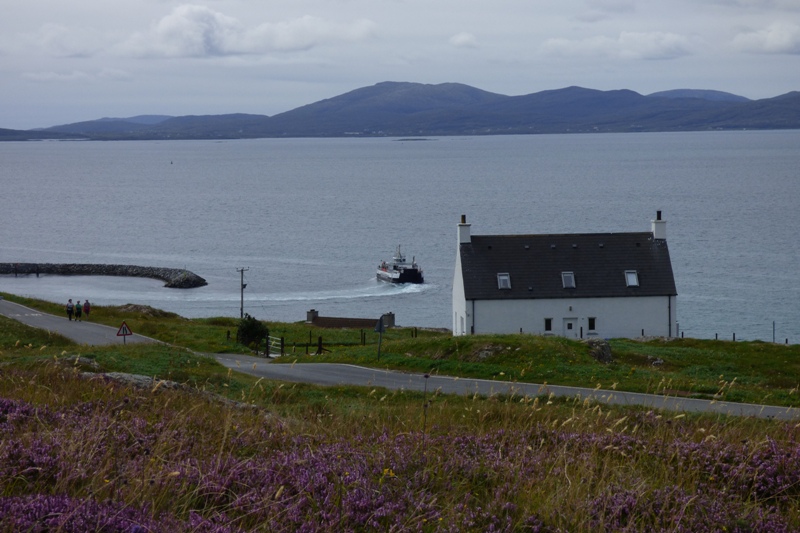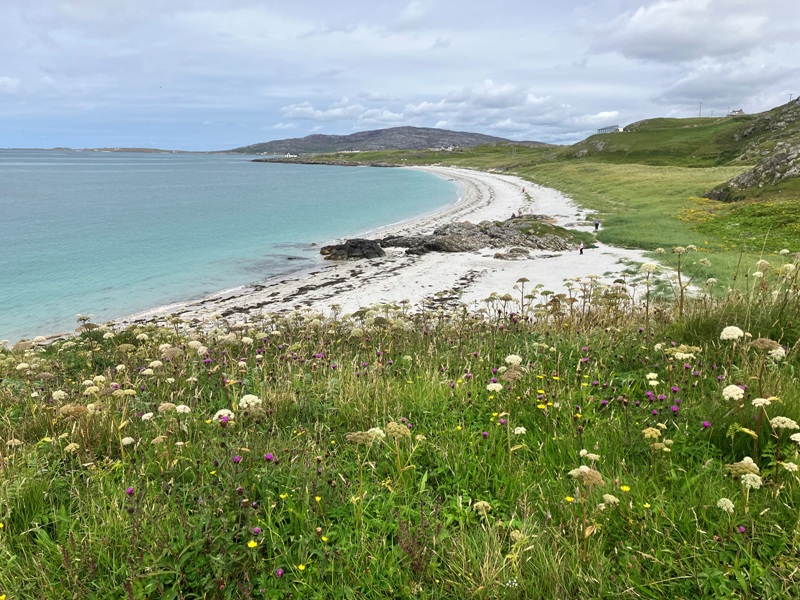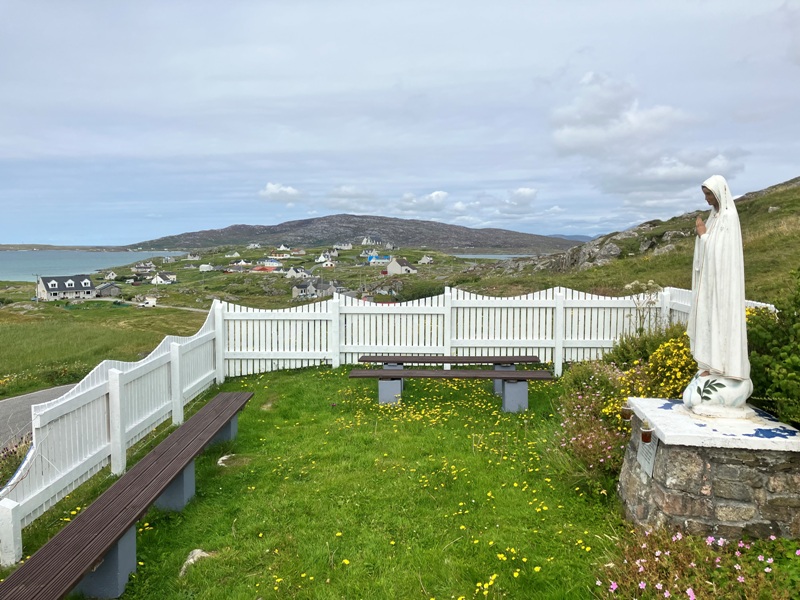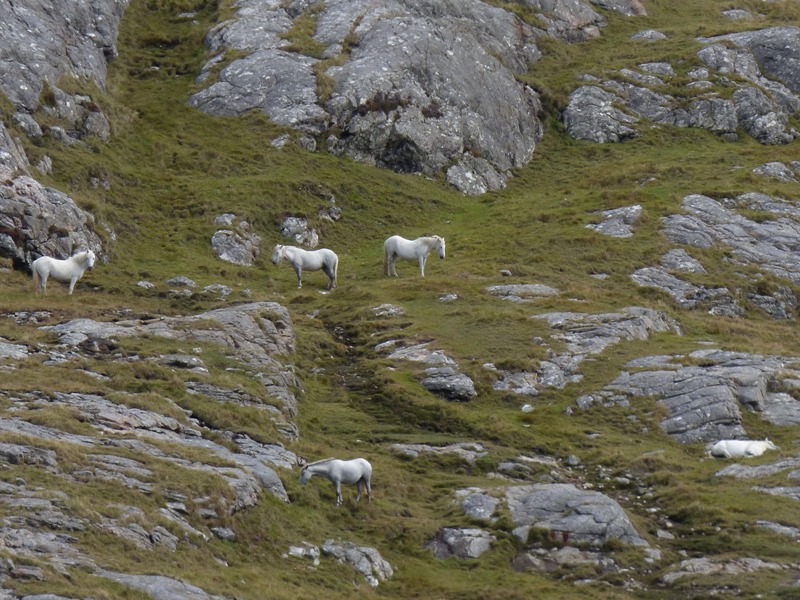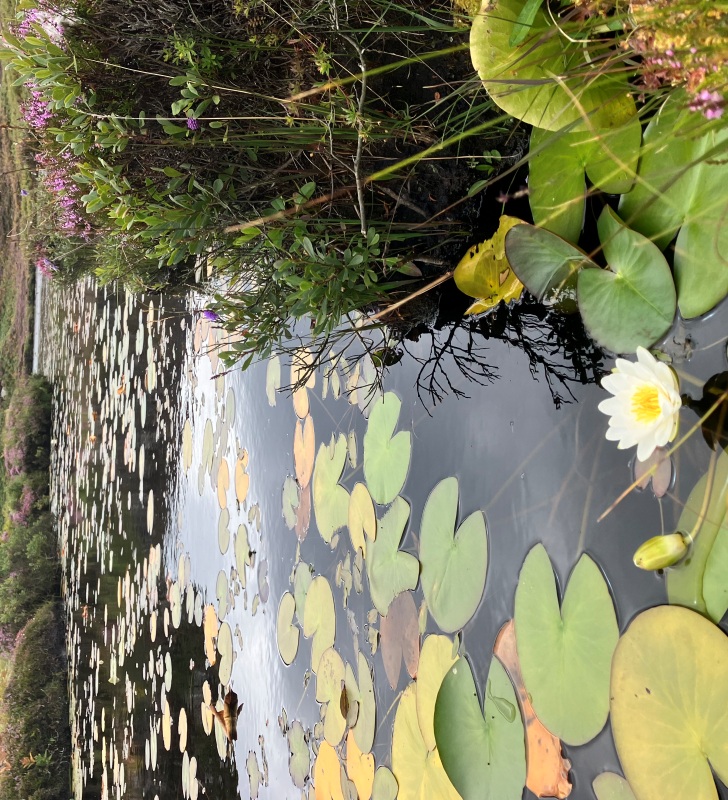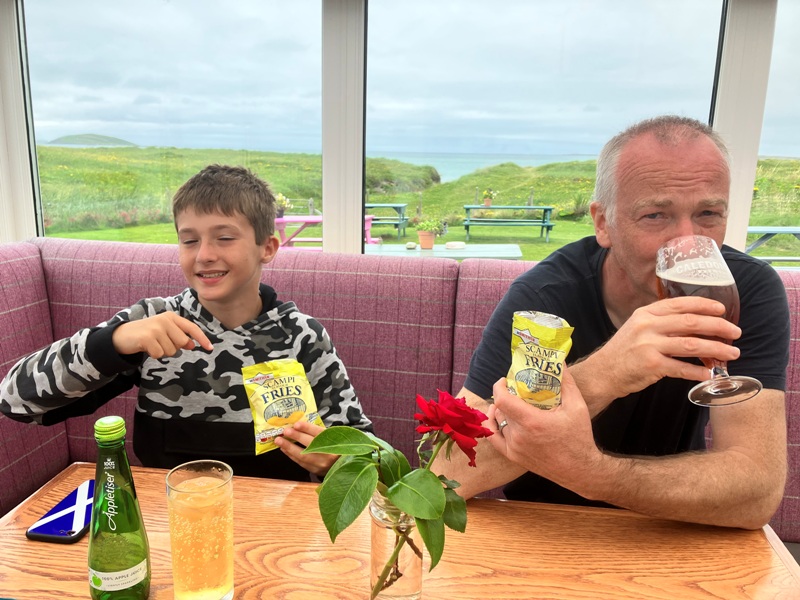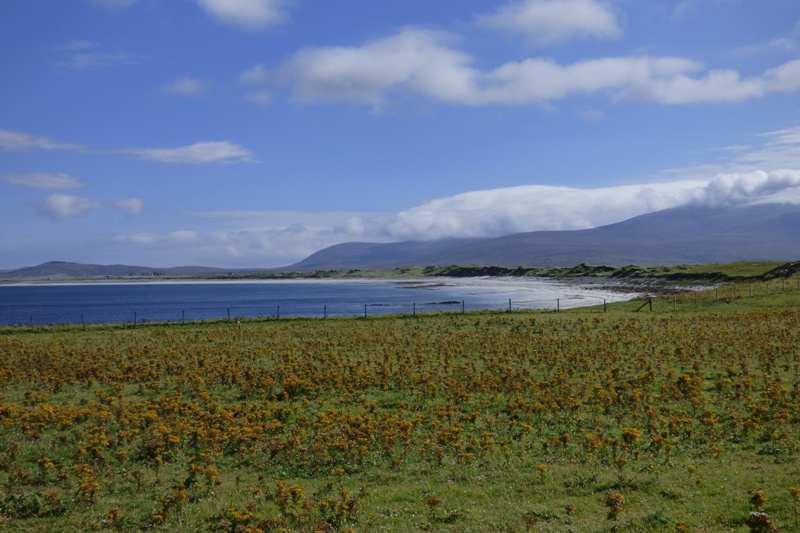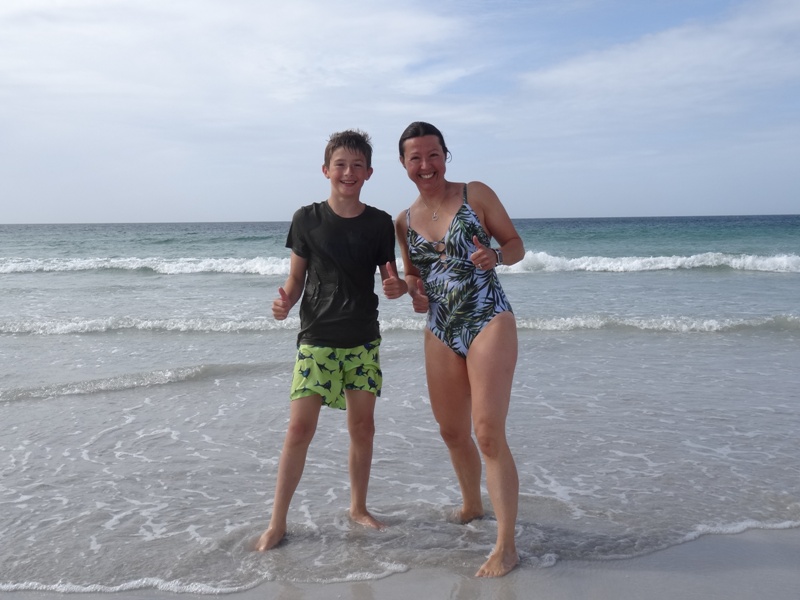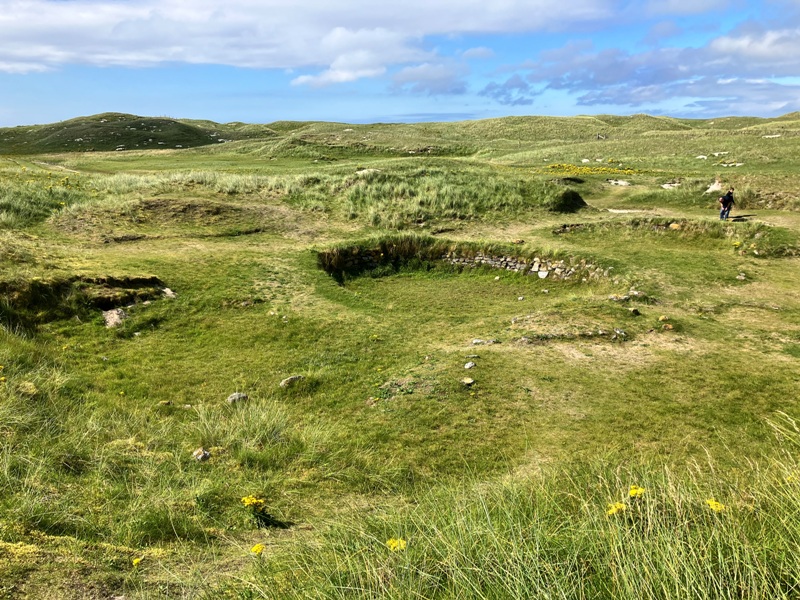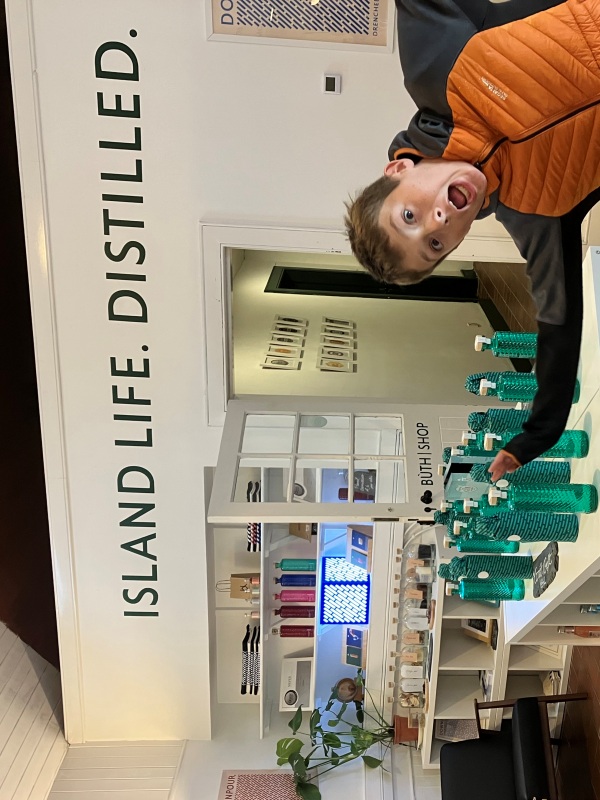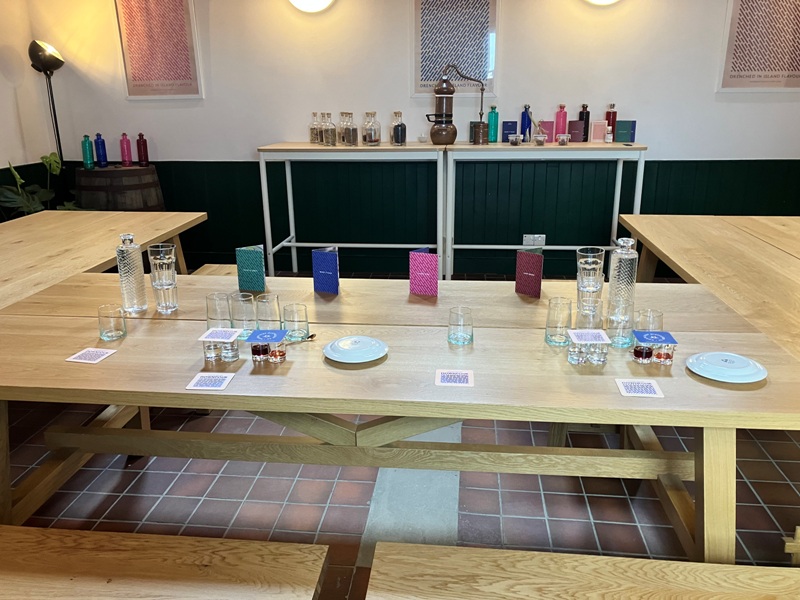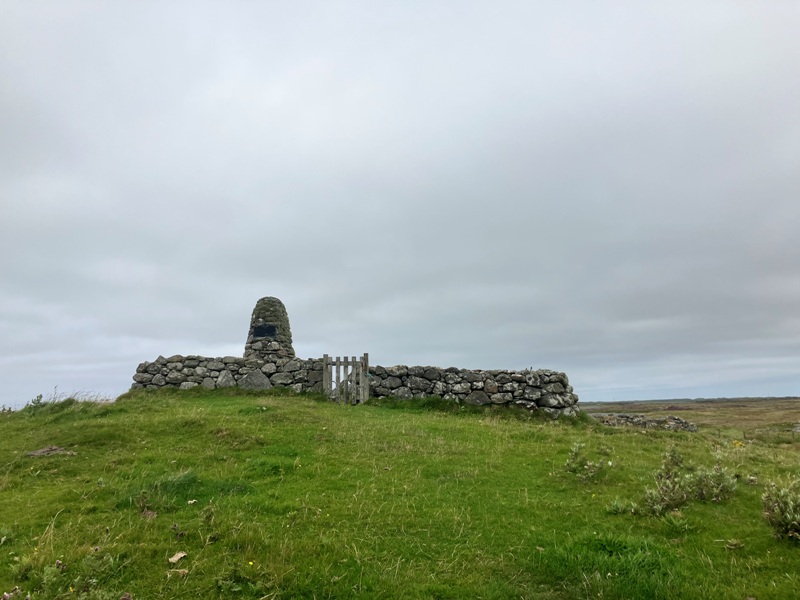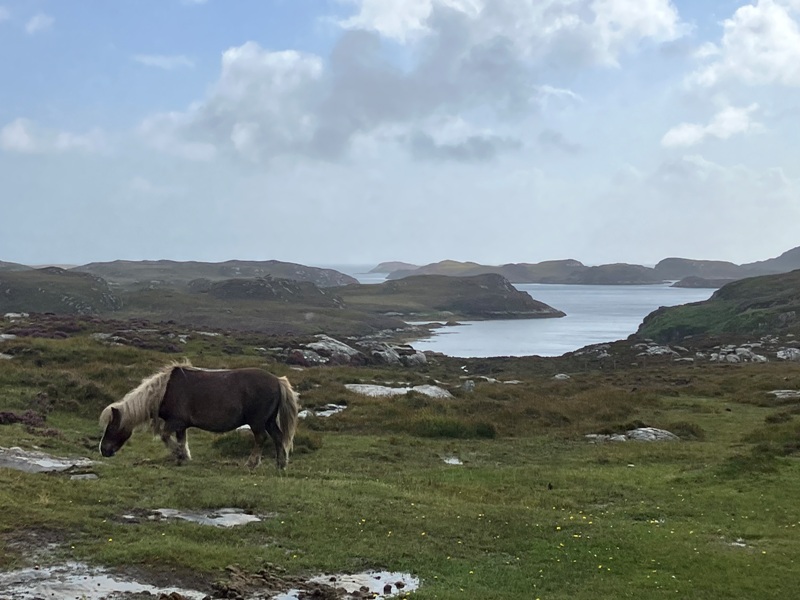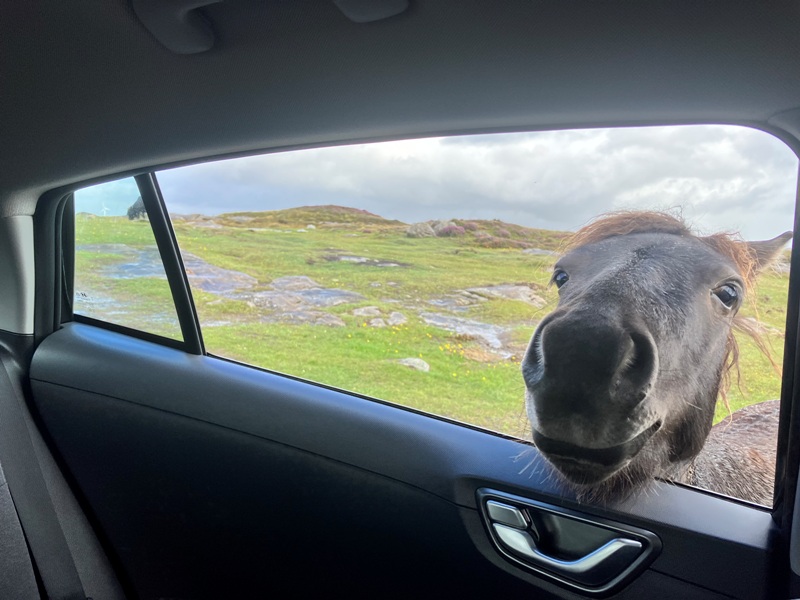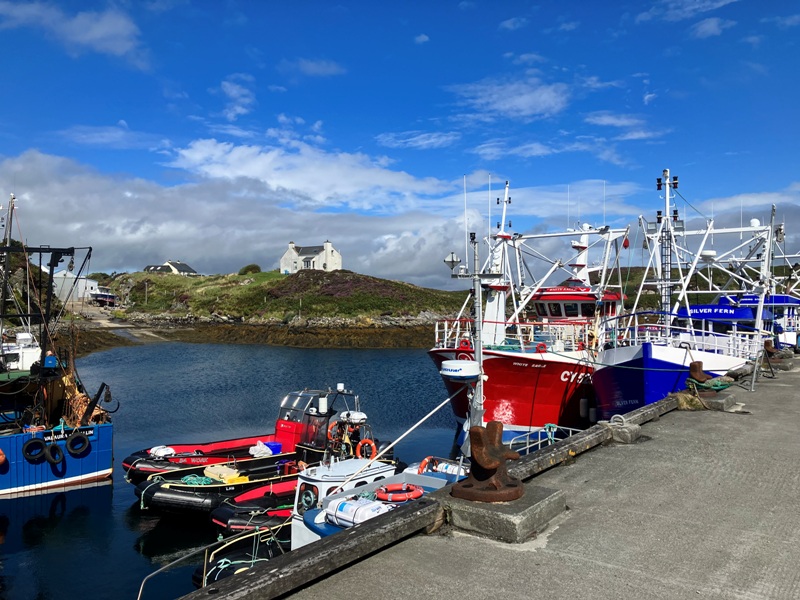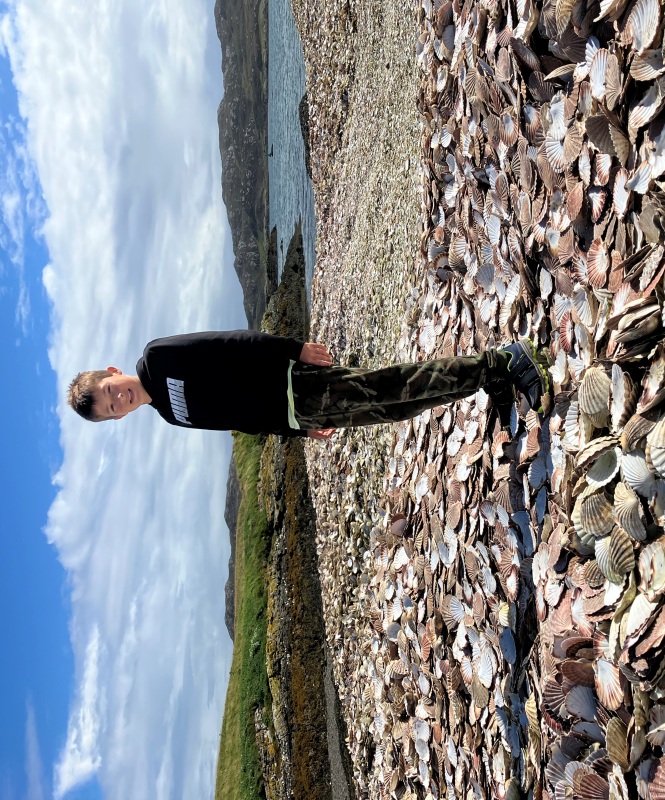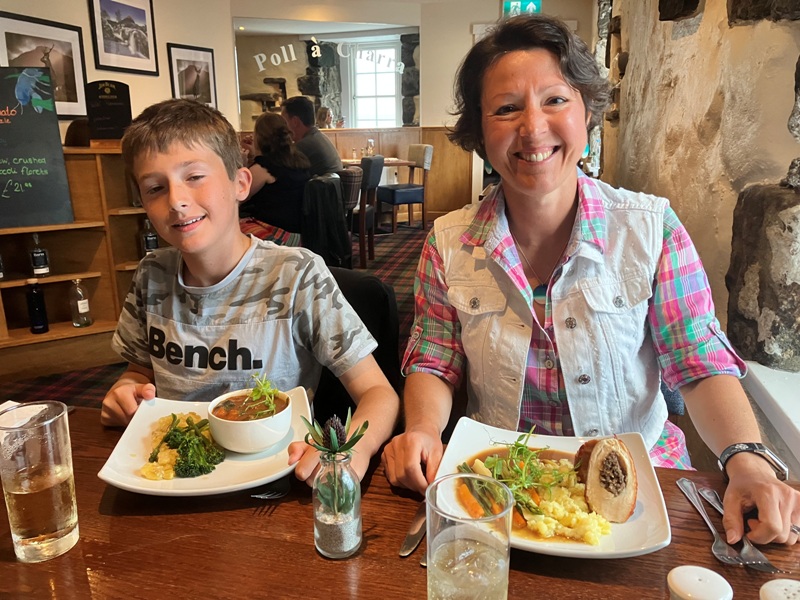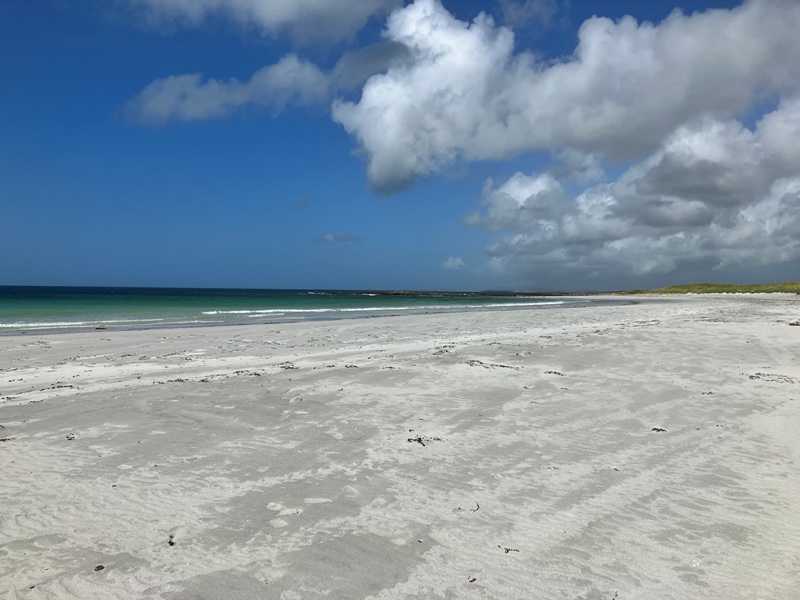Scotland Travel Blog September 2023
”A Week in South Uist”
Last month I wrote about the Isle of Barra, and in that blog I suggested that if you visit Barra, you should really consider adding on a few days in South Uist too. So this blog is a sequel with some observations and suggestions for places to visit if you are basing yourselves in South Uist for a stay of several days. And you really need to stay here for at least 4 days to do it justice.
South Uist, is just one of a group of six islands that are linked by a series of causeways from Eriskay in the south, to Berneray in the north. I could have added a few other outlying islands to that list as causeways also let you drive to the small islands of Baile Sear, Eilean Fraoch, and Flodda.
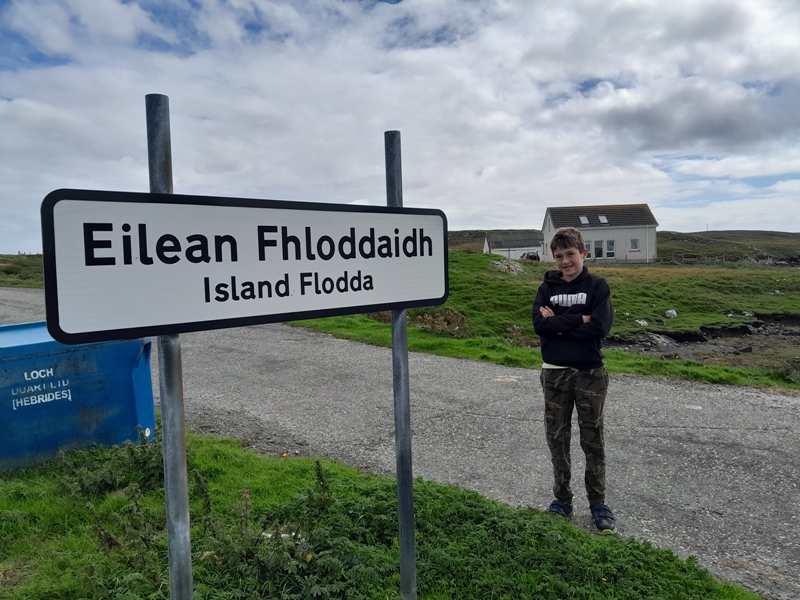
We’ve previously visited Berneray, North Uist, and Benbecula, but this was our first time in South Uist and Eriskay, so we focused our exploration around this area. Our base for the week was a caravan, in a remote location on the southern shore of Loch Eynort. It was literally at the end of the road with no pubs, shops or neighbours in sight, unless you count sheep, seals, and the occasional otter.
First Impressions
The first thing that hit me about South Uist was the sense of isolation. I don’t consider myself to be a “Townie”. I’m not bothered if I don’t have access to lots of shops, restaurants or a cinema. But I don’t think I’m suited to life on South Uist.
I don’t mean that as a criticism of the island. I mean it as an acknowledgment that the people of South Uist are a special breed. To live here, you need to be a hardy and independent type. You also need to be able to drive, because everything on the island is spread out. And that means you also need to be well organised as popping out to the shop for some milk might involve a 1 hour round trip.
When you look at the map, you’ll see place names, but you shouldn’t expect these place names to indicate villages with a pub or a shop. Instead, the landscape is randomly peppered with croft houses and the nearest “neighbours” might be half a mile away. There’s a few pubs, but you might have a long drive to get to one.
For me, South Uist has an air of melancholy about it. It’s hard to explain quite why I felt this way about the island. The presence of abandoned houses that stand like neglected memorials to lost families, and grey harled churches with austere facades is certainly a contributory factor.
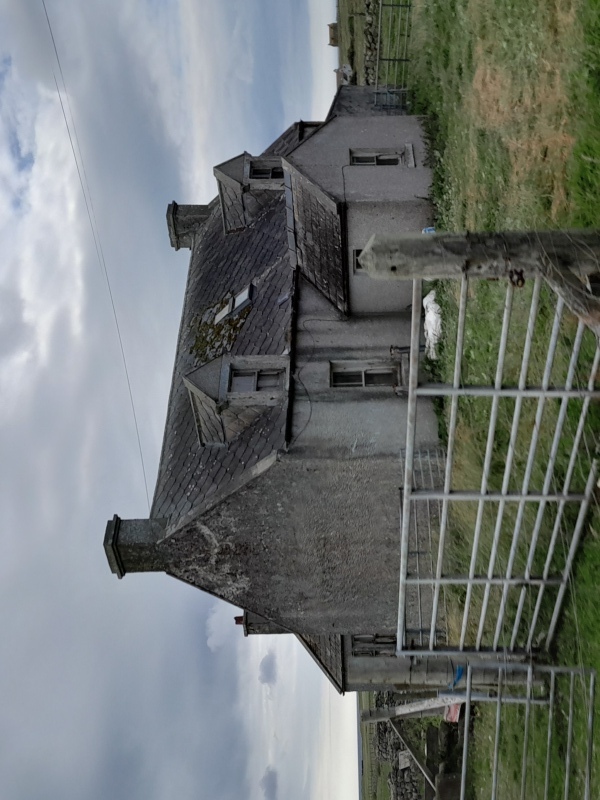
The upside of these islands is that they are unspoiled by the over-tourism that has blighted places like Skye. On Skye, it can be a struggle to find a quiet spot away from the tourist crowds. But you can always find an empty beach, or a quiet back road on South Uist, even in the height of Summer.
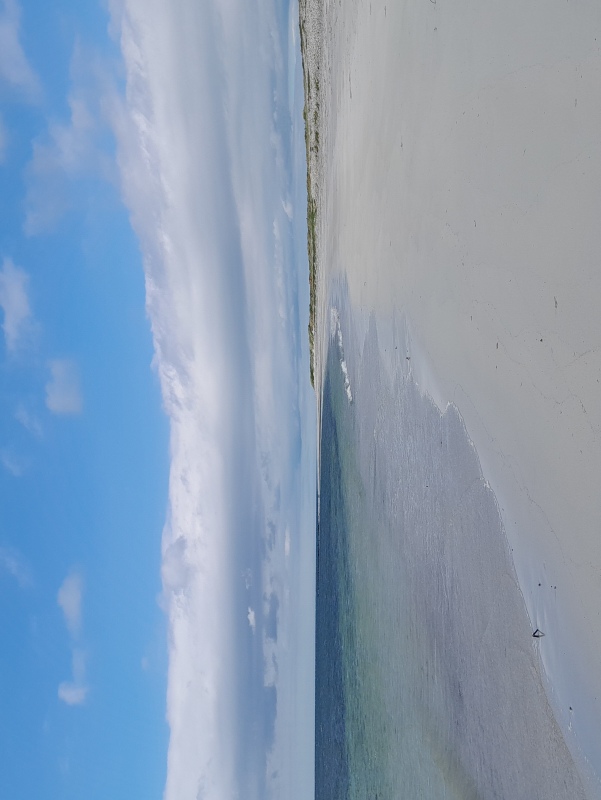
This is a holiday destination for the slow traveler. The sort of person that wants to get a feel for a different culture, and who understands that less can be more. There isn’t any single tourist attraction that stands out here. So, it doesn’t attract the “click and go” style of tourist who just want to jump out of their car to get a selfie for their social media account before heading to the next destination.
Instead, you come here to appreciate the timelessness of the landscape. You have to embrace the rapidly changing weather and the different moods that it casts on the landscape. You need to slow down and get in touch with nature.
So here’s our wee list of the places and experiences we enjoyed most during our stay in South Uist. I should clarify that these places aren’t all on South Uist, but they are all places that you can easily do as a day trip from there.
Eriskay
Since we were traveling to Uist via the short ferry crossing from Barra to Eriskay, it made sense to spend a day on this little island before heading onto our accommodation. Most of the other passengers on the ferry seemed to speed through Eriskay, but there’s enough here to justify a day of your time.
As soon as we got off the ferry, we parked the car at the first lay-by so that we could start our hike with a walk along a lovely sheltered beach with the tongue-twisting Gaelic name of "Coilleag a'Phrionnsa", which roughly translates as“the Prince’s Cockleshell Strand”. This is a nice safe beach for a swim and you don’t have to go too far out before the water is deep enough for a swim.
The name of the beach commemorates the fact that this is where Bonnie Prince Charlie first set foot on Scottish soil on the 23rd July 1745, having spent most of his life in France. He was met here by Alasdair Macdonald who very wisely told him to “Get to France”. Unfortunately, the young Prince was an arrogant sod and he ignored the good advice.
If you’re interested in Jacobite history and tracing tangible links to that period, the walled garden that you pass beside Kilbride Cafe and Kilbride Hostel, is the walled garden of the house that Alasdair MacDonald lived in. The house stood on the site now occupied by the campsite office.
There is another story associated with the Prince’s arrival on Eriskay, but it is more folklore than fact. Eriskay’s Machair (the Gaelic name for the grassy coastal plains of the North West Highlands) is home to a small pink wildflower that the locals call “Prince’s Flower”. Legend has it that the seeds of this flower arrived with the prince and were scattered by him after he set foot on Scottish soil. A nice story if a bit fanciful. We think we found some in the small fenced-off garden beside the statue of the Virgin Mary that looks out over Eriskay’s main township, Am Baile.
After the beach, we walked up through Am Baile, towards the aforementioned statue of the Virgin Mary and the start of a waymarked trail that took us below Eriskay’s highest point, Beinn Sciathan. The slopes of this little hill were occupied by Eriskay’s famous ponies. These ponies are indigenous to the Western Isles and are so rare that they are classified as endangered species. The ponies roam freely on Eriskay, but tend to keep their distance from humans.
Our next destination on Eriskay was a cove on the sheltered inlet of Acairseid Mhor (which is a Norse / Gaelic word that means the “big anchorage”). The attraction of visiting this hidden cove was the hope that we’d be able to see some otters. Scottish otters are nocturnal by nature, but the cove that we were heading to is seldom visited by humans so the otters are less worried about being caught in the open during daylight.
Sadly, there were no otters to be seen, but we found an otter’s holt and some evidence of their activity. Compensation for the lack of otters was lots of inquisitive seals, beautiful wildflowers, and a little lochan with water lilies coming into bloom.
Our hiking route from one side of the island to the other and back, took about four and a half hours, so we felt we’d earned ourselves a pint of beer and a packet of crisps at Eriskay’s only pub, the “Am Politician”. The pub takes its name from the ship that sank off Eriskay in 1941 with a cargo of whisky. The subsequent looting of the ship by the locals being the inspiration of Compton Mackenzie’s “Whisky Galore” which is a rather romanticised account of a true story.
From the outside, Am Politician looks more like someone’s bungalow home, but it’s actually quite a nice wee boozer inside and the food looked good. But we didn’t stay for a meal as our caravan on South Uist was beckoning.
Bagh a Tuath
There’s no shortage of great beaches in the Western Isles. The west coast of South Uist is practically one long stretch of sand briefly interrupted by the occasional rocky headland.
Whilst the beaches of Barra all felt quite different, the beaches of South Uist have a much more uniform pattern with long sweeping bays that back onto wide open areas of machair and moorland that is overlooked by a ridge of craggy hilltops.
This uniformity makes it harder to pick a favourite beach, but there was one beach we particularly enjoyed swimming at because the sea felt strangely warmer than elsewhere. So the beach we’re recommending is at Bagh a Tuath (“North Bay”) near the northern tip of South Uist.
This bay is sheltered on its western flank by a rocky headland called “Rubha Aird na Machrach”, and this may explain the warmer waters.
Cladh Hallan Roundhouses
South Uist has evidence of human habitation dating back 5000 years, but it doesn’t have anything quite as spectacular as the Calanais standing stones or Dun Carloway broch on the Isle of Lewis. The evidence of the ancient inhabitants is here, but in most cases, there isn’t much to be seen other than a grassy mound or a few exposed stones.
The archaeological site that we found most interesting was the Bronze Age roundhouse settlement in the sand dunes at Cladh Hallan. This site has been extensively excavated and is of particular interest to archaeologists as they found 4 skeletons buried in the houses that forensic studies have determined to be from mummified bodies.
But the story of these mummified bodies has several twists in it. Carbon dating of 2 of the skeletons indicated that they died around 1600 BC and 1300 BC. They were then “mummified” by being placed in a peat bog, but after that the bodies were dug up (circa 1100 BC) and reinterred within the roundhouses.
And if you think that’s bizarre, it gets weirder. Not only did they bury a pickled ancestor in their homes, they also mixed and matched body parts from different skeletons. It was either part of some ancient religious ritual, or maybe they used the mummified body parts for a macabre jigsaw puzzle. Please note that the latter theory is my own speculation and isn’t supported by any archaeological research.
The form of the roundhouses is much easier to imagine as the “footprint” of their lower walls is still intact. If you want a better understanding, there’s a neat App that you can download to your phone that uses 3D modeling to recreate the roundhouses complete with thatched roofing and residents.
Downpour Gin
We were pretty lucky with the weather for most of our week on South Uist, but there was one afternoon when it rained and it rained hard. Our back up plan for this day was a visit to the Isle of Benbecula so that Aury could stock up on some Gin for herself and her best friends.
Benbecula is the island just north of South Uist, and the 2 islands are joined by a long straight section of causeway. Benbecula is home to the main airport for this group of islands, and the presence of the airport has resulted in the growth of the adjacent village. So, this is one of the few places where you will find a cluster of houses, shops and other services. But the village consists largely of ugly MOD housing built in the 1970s. So it is quite stark, especially on a wet and overcast day.
Fortunately, not too far away, you can lift your spirits at the Downpour Gin Distillery (did you see what I did there!?). The distillery is housed in Nunton Steading which dates from the 1700’s and is claimed to have some connections to Bonnie Prince Charlie’s escape after Culloden. It’s a bold and inspiring entrepreneurial venture by a local couple, Jonny & Kate, who were born and raised on the island.
We really admire them for what they’ve achieved and the branding of their distillery is brilliant. The logo is a stylised depiction of a heavy rainfall. The logo is replicated on the rough lawn of the courtyard at the steading, with the grass cut in rectangular blocks. All very subtle, but clever.
We didn’t have time to do a tour, but Aury enjoyed sampling the gins and bought a couple of bottles which are offered in a spectrum of bold colours depending on the flavour. The bright colours create a rainbow effect which once again ties in with the Downpour theme. This is very clever brand marketing.
I’ll be back when their whisky is ready to taste.
Flora MacDonald’s BirthPlace
I’ve already mentioned Bonnie Prince Charlie a few times as the Western Isles have many connections with the Jacobite Rebellions. The most famous of these connections being Flora MacDonald who was born on South Uist and the location of her believed birthplace is commemorated with a memorial.
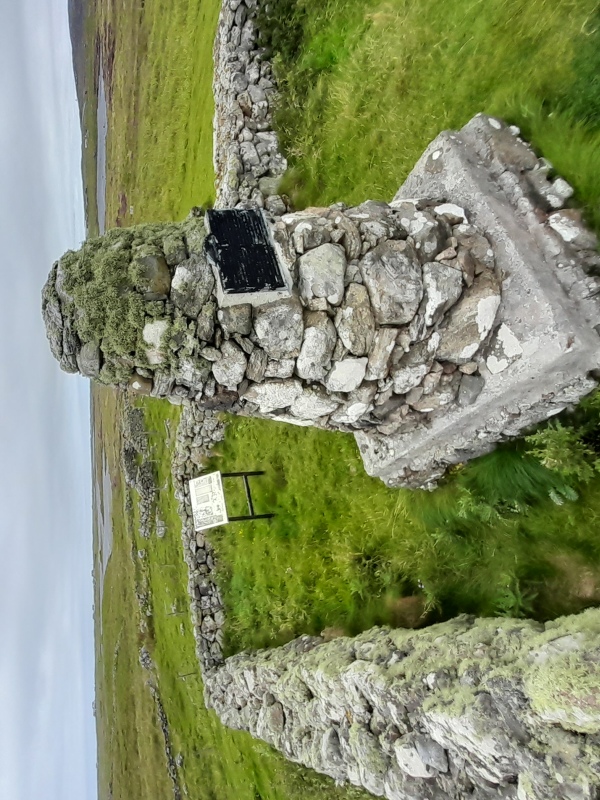
Flora is a much-romanticised figure in the history of the 1745 Rebellion. At the time of the Rebellion, she was living on Skye in a community that was not supportive of the Jacobites. She was a Protestant from an anti-Jacobite family, and thus an unlikely ally for a Catholic Prince. Because of her background, she was able to travel without suspicion at a time when Government Redcoat soldiers were actively hunting the Prince and persecuting anyone thought to have sympathy with the Jacobite cause.
Flora’s involvement with the Prince was brief, but instrumental in his escape. She arranged for him to travel with her entourage by disguising the Prince as one of her maids. This is the journey that the “Skye Boat Song” is all about (you may know it as the theme tune to “Outlander”, but they changed the lyrics for the TV show). The crossing was from Benbecula to Skye, but after they arrived on Skye, the Prince and Flora parted and never met again.
The memorial stands in an enclosure in the crofting community of Milton. It all feels a long long way away from the European palaces where the scheming and plotting of conflicting royal dynasties led to so much bloodshed and tragedy for the people of the Scottish Highlands.
Shetland Ponies at Loch Druidibeag Nature Reserve
I’ve told you about the ponies of Eriskay, but there’s another herd of free-ranging horses in these parts that doesn’t get quite so much publicity. I’m referring to the ponies that range free in the Loch Druidibeag Nature Reserve area and are usually found near the end of the road to Loch Sgiopoirt (or Loch Skipport to give it its Anglicised name).
I’m not an expert on Equine identification, but they look like Shetland ponies to me and I believe they belong to a local crofter called Donald John . They’re all quite short and stout. They’re also very friendly and will trot up to you to say hello as soon as they see you. Much friendlier than their cousins on Eriskay.
The ponies have become a bit of a tourist attraction and their friendliness is no doubt explained by their anticipation of receiving something to eat. We have to ask you to try to resist their considerable charm and don’t feed them anything unless you know enough about horses to understand what they shouldn’t eat.
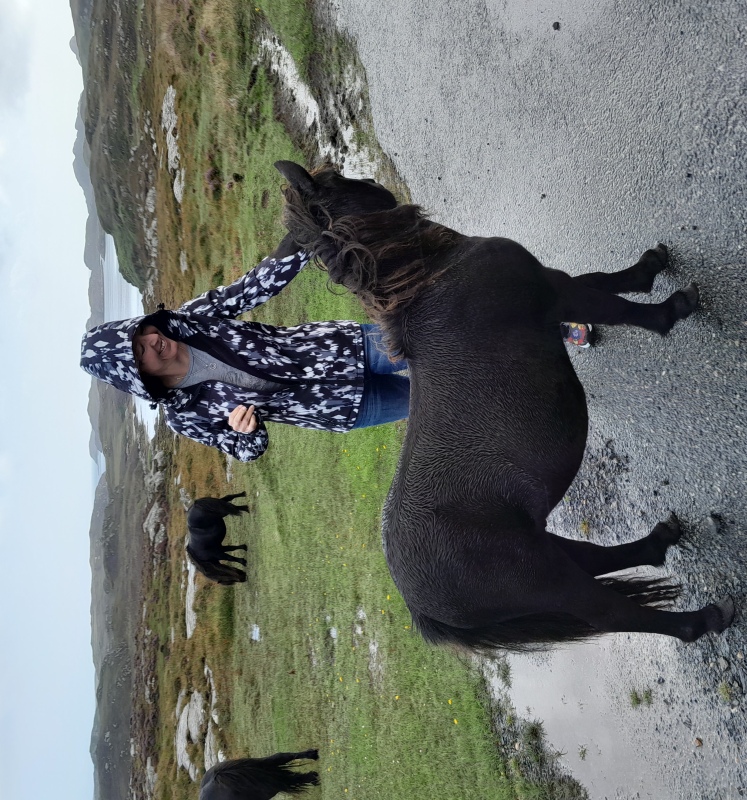
If you don’t know what things are bad for horses, then please Google it. But in summary chocolate, bread, dairy products and any type of fruit with pips or a stone are a BIG NO! If you want to meet the ponies and learn more about them, you can book a tour with Donald John at this website.
Arinaban Woodlands
Trees are a bit of a novelty in the Western Isles, but it wasn’t always quite as barren as you see it today. A combination of tree planting and fencing to exclude the damaging grazing of sheep / deer, has resulted in a surprisingly dense woodland becoming established on the north shore of Loch Eynort.
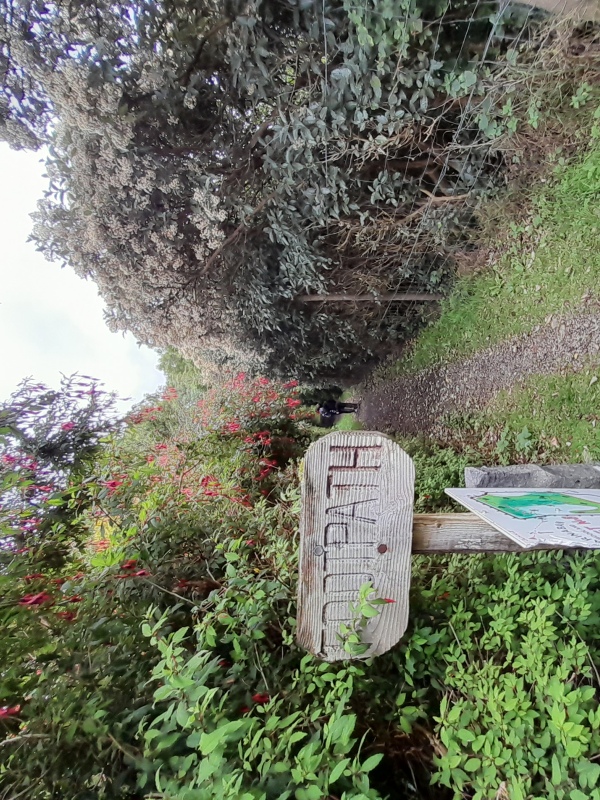
The woodland is privately owned, but you are welcome to wander around its network of paths and stop for a picnic at one of the provided picnic tables. All that the owners ask is a small contribution to the “honesty box” that you’ll find at the entrance to the woods.
After a week with hardly a tree in sight, it was strangely comforting to be able to wander in a woodland. It was also a great place for finding purple heather in full bloom, and the bees were enjoying this too.
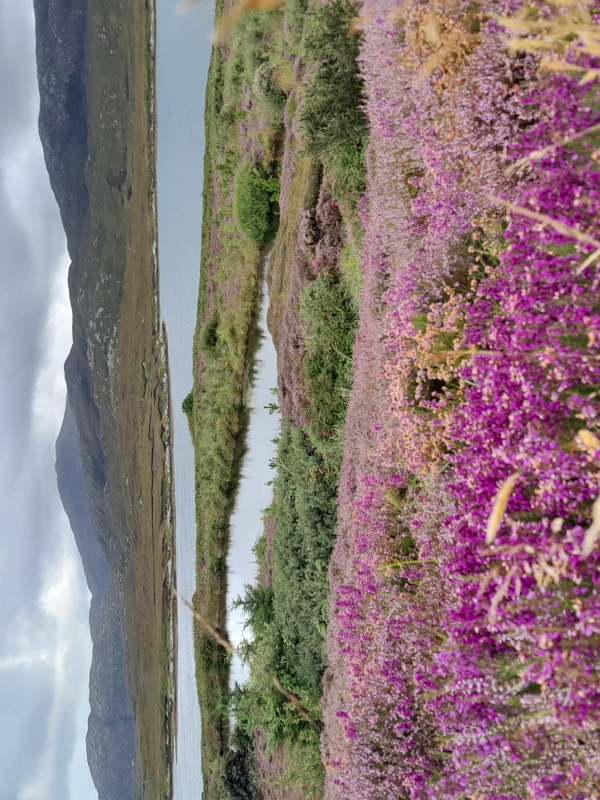
Grimsay, Kallin Harbour, and Na Mara Seafood
The impression that a place leaves on you is often a factor of the weather you have when you first visit. So the sunny August weather is maybe why Grimsay is the island I feel most enamored by in this archipelago.
The main reason for our visit to Grimsay was to buy some Foodie treats at Na Mara Seafood which is located near the pretty harbour at Kallin (or Ceallan to give it its correct Gaelic title). Kallin harbour is an active fishing port with a mix of small creel boats and some substantial deep-water fishing vessels.
Just beside the harbour, there is a ship chandler’s shop that has a small Seafood cafe attached. The cafe is open Tuesday - Saturday and offers evening meals on a Friday - Saturday (up to 7pm), but these need to be pre-booked by calling 07495 978696. Don’t expect a fancy restaurant with silver service, this place doesn’t need gimmicks, the freshness of the seafood is what it’s all about here.
Continuing along the road from Kallin harbour, you can visit the fish shop attached to the Na Mara Seafood processing factory. The amount of shellfish that is processed here is quite staggering and you’ll appreciate this when you see the piles of scallop shells tipped onto the shoreline beside the carpark. There are literally thousands of them so feel free to take a souvenir shell home with you.
In the shop, you can buy a wide range of fresh and frozen fish and shellfish. And if you want really fresh, they have a tank with several pretty pissed off looking lobsters awaiting their fate.
Polochar Inn
After a week of self-catering in a caravan, albeit a very comfortable caravan, we felt we deserved a treat to celebrate the end of our holiday in South Uist. We wanted somewhere with a bit of character, ideally a nice sea view and a menu with lots of local ingredients cooked with a bit of flair. The place that everyone recommended to us was the Polochar Inn.
There has been an Inn at this site since 1609, but we’re not sure if the oldest parts of the present Inn date as far back as that. It has certainly had bits added to it over the years. Even older than the hotel is the Bronze Age standing stone that you pass as you drive up to the hotel.
The hotel is now owned by some American businessmen who took it over in May 2022 and we’re told that they have plans to invest and upgrade the property. I can’t comment on what it’s like to stay here, but the food was very good. I especially enjoyed my Scallop starter and Junior quickly devoured his Venison stew.
South Uist in Summary
As you may have appreciated from my earlier comments, South Uist is quite low-key when it comes to catering for tourism. With its fantastic beaches facing onto the Atlantic, you might expect to find windsurfing schools and other such activities. But these islands just don’t seem to get enough visitors to support such businesses.
This isn’t a bad thing as it lets you experience a way of island life that hasn’t been changed to cater to “outsiders”. We enjoyed being in a place that felt authentic. It’s a very different experience to Skye where you stick the word “Fairy” in front of something and it gets swamped by visitors.
If Skye had one beach as good as the ones you find on South Uist, it would be all over Instagram. But on South Uist, you can have a stunning beach all to yourself.
Of course, there’s far more to do on these islands than I’ve covered here. This blog is just a snapshot of the places that linger strongest in my memories. I openly admit that I've omitted more than I have highlighted, but we will go back and tell you more when we return.
